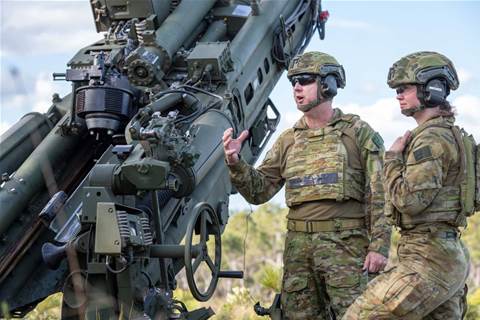The Department of Defence is unconvinced its long-running fixed telecommunications network replacement project with Telstra will be a success without urgent action, despite pouring more than $1.8 billion into the overhaul over the last seven years.
Documents obtained by iTnews under freedom of information laws reveal that the so-called ‘terrestrial communication project’ was evaluated as having a “medium-low” delivery confidence when last assessed by its senior responsible officer.
A medium-low rating is considered the second worst delivery confidence level attainable for a project, with urgent action deemed necessary to address major risks or issues in a number of key areas.
Projects with such a rating are also likely to require changes to budget, schedule, scope or the expected benefits in the future, as has already been required of the Defence terrestrial communications network (DTCN) over its lifespan.
The DTCN, which Telstra was first assigned to build in October 2012, is expected to link all of Defence’s permanent sites and overseas troop deployments to the same network, and integrate its satellite and tactical networks.
The health status is one of few insights iTnews has garnered from a heavily redacted report produced by Defence’s chief information officer group (CIOG) for the Digital Transformation Agency in September 2019.
The colour-coded accountability mechanism, although redacted, is decipherable using an addendum attached to another set of documents prepared for the DTA by a separate department last year that was previously obtained under FOI laws.
Documents also reveal that it is not the first time the project has received a medium-low delivery confidence; the less-than glowing score was also recorded during Defence’s last assessment of the project.
A Defence spokesperson confirmed to iTnews that the “peach colour represents ‘medium-low’ delivery confidence”.
But whether the project’s delivery confidence is likely to worsen, remain the same or improve in the future - an assessment also made by the DTCN’s senior responsible officer - remains unknown, as it has been redacted.
The spokesperson similarly would not say whether a report on the project has been produced by Defence for the DTA since September 2019 or if there was a more recent delivery confidence rating.
Persistent issues
The two successive medium-low delivery confidence ratings appear to stem from a number of “current significant issues” with the project, continuing a long-running trend that first started in 2016.
In response, FOI documents reveal CIOG planned a number of undisclosed corrective actions, including a “resolution plan meeting”, in a bid to resolve the remaining network issues ahead of the project’s revised completion date, currently slated for September 30.
As iTnews revealed earlier this year, the department was forced to further delay the project after it became clear it would not achieve ‘final operating capability’ (FOC) – or full operations – before the end of last year.
FOC, which was originally expected in mid-2016, was initially pushed back due to delays with the high-speed, IP-based network's first critical milestones, including the initial operating capability (IOC), four years ago.
But more recently, FOC delays have stemmed from the unified communications capability, which despite progressing from the design phase to the delivery phase in the five months between September 2019 and February 2020 has still not been delivered.
A spokesperson told iTnews the project was “yet to achieve FOC”, with the unified communications capability underway and “continuing to deliver through 2020”.
But the department did reveal that the remaining 11 Defence sites out of the 353 in scope of the project have now been transformed to the DTCN, although it did not say if the sites have received formal service acceptance.
Documents also reveal that the department was forced to redesign components of the network and take on “additional workforce elements” to support the migration of Defence sites to the network.
Cost discrepancy
While the “whole of life” cost of the project has not been disclosed, the FOI documents indicate that $461.1 million had been spent on JP2047 Phase 3, as at the end of 2018-19.
This includes $395.4 million spent prior to the 2018-19 financial year and $58.5 million in 2018-19.
But these figures are inconsistent with the publicly available contract notices, which suggest the seven-year project is now nudging $1.85 billion.
The project cost increased significantly earlier this year, when Telstra was handed a $313.7 million extension that will see it support the network until October 2021.
The contract amendment is the first major extension since December 2017, when FOI documents reveal additional funds were allocated to Defence after a real cost increase submission.
This article originally appeared in iTnews.com.au






.png&h=142&w=230&c=1&s=1)







.jpg&w=100&c=1&s=0)
_(8).jpg&w=100&c=1&s=0)










